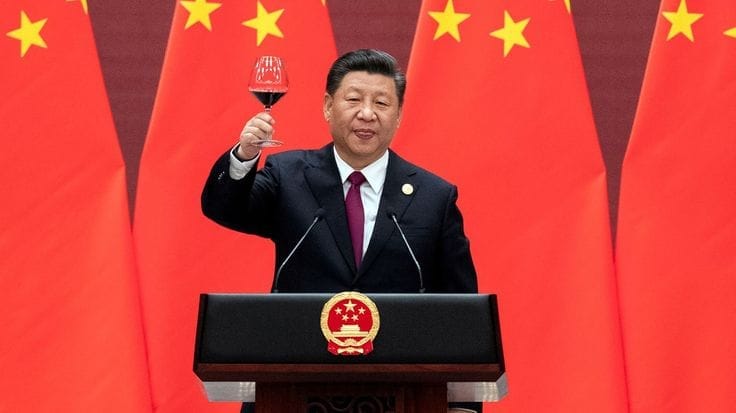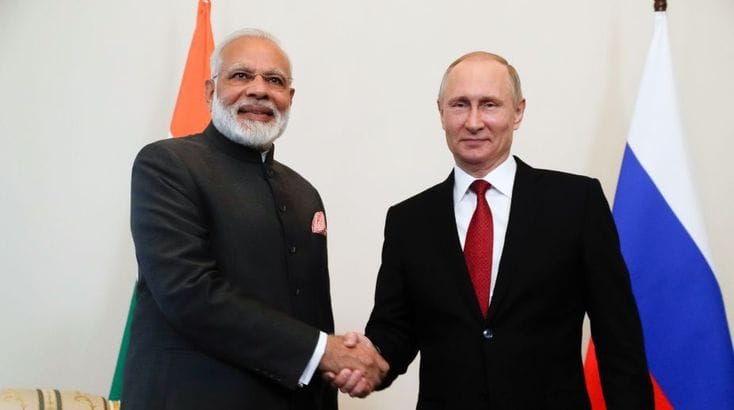RUSSIA CHOOSES INDIA OVER CHINA TO BUILD ₹6,000 CRORE NON-NUCLEAR ICEBREAKERS
That the non-nuclear fleet of ice-breakers Russia is going to build for itself along with India will be an estimated ₹6,000 crore does certainly come as an interesting incident. That becomes an indication not only of the strengthening of Indo-Russian relations but also of a growing trust factor in India’s capabilities over its neighbor, China. Since this process accelerates the melting of ice in Arctic regions, advanced ice-breaking technology is most in-demand than ever before. In this respect, this partnership comes at a right time and strategically important to consider the complete scenario.
Background of the Agreement
The United States and Russia had signed the agreement for the Cooperative Threat Reduction Program back on 20 May 1992. It meant that the two countries would work cooperatively for countering threats associated with weapons and weaponusable fissile material.
Traditionally, Russia has been of great importance for passage through the Arctic seas – which guarantees further access to shipping routes and opportunities for resource exploration-by and with icebreakers. Actually, by climatic change, Moscow realized how much it was important for the upgrade of its fleet of ice-breakers in account of the viability of the Northern Sea Route. For Russia, it has been internal enterprise which, so far, has been the wellspring of ice-breakers, but the push towards quick progress has motivated the coming of international cooperation.
China too is very keen on the exploration of the Arctic and has made tremendous strides in ice-breaker technology, but Russia’s coming together with India indicates that it has now taken a strategic decision. This economic action also questions the political and strategic equations in an increasingly shifting order of a new global dispensation.
Indo-Russian Rapprochement Gains Momentum

The treaty is India-Russia cooperation at its major landmark, but their relations remain strong over the past but not that progressive lately since the change in world dynamics. By choosing India, Russia makes a repeat declaration about her long history of association marked by respect and common interest in defense, energy, and technology.
India has been a very solid partner for Russia, especially in the defense sector where the joint ventures and technology transfer have been going quite well under the cooperation of the country. The icebreaker deal could only add muscle to this by showing the fact that India is emerging as a maritime power and which has capabilities to contribute to critical infrastructure projects.
Increasing Maritime Capabilities
Such a focus of the country on high-tech and infrastructure makes Indian capability of ship building continually thrive. For this reason, Russia wants to transfer icebreaker construction into India, based on faith in Indian capability. Shipyards at Cochin and Mumbai in India have far improved from ship construction basics and placed themselves in a position to easily take charge of leading for maritime technology.
Of huge significance is that this co-operation will enable India to evolve a fully indigenous naval capability of its own. With how effortlessly the earth’s trade route is being transformed and how the Arctic continues opening up, being at the cutting edge of the icebreaker vessel can be of great help to India. The project benefits Russia, too, while allowing India to gain strategic strength in the Indian Ocean and beyond.
This strategic choice between India and China holds multi-facet strategic implications. It speaks about Russian intent to diversify its partnerships and to decrease dependency on China-an increasingly worrying factor for Moscow. Though both had maintained a cooperative relationship, spurt in Chinese assertiveness in the region in recent times has made Russia take note.
Further, it further supports one of India’s ambitions-more or less comparable to so many other nations -to become a significant player in international maritime affairs. As the Indian Navy is increasingly being focused on to boost the operational capacity in the Indo-Pacific region, the icebreaker project could thus be a first step for India to assert its interest in Arctic affairs as well.
This partnership should, therefore, expand more opportunities for subsequent cooperation on other relevant areas of energy, renewable energy, and environmental technologies. Considering that both India and Russia suffer under the odd pressures of climate change, joint ventures may lead to developments beneficial not only to the above countries but the world at large.

Challenges Ahead
Although the expectations from the deal are very positive, challenges ahead may arise. International logistics and technology transfer between the said geopolitical climate may prove complicated regarding its actual implementation into the project. Besides this, two countries shall need to maneuver their way through complexities in Arctic governance and environmental considerations while taking on this project.
India would need to have adequate technology and know-how for this purpose. The high-tech icebreakers involved are not just a physical structure but also a qualified manpower along with the technological know-how. Research and development initiatives on a cooperative basis would help bridge the gaps.
Conclusion

Day in international relations: Russia wants to co-build icebreakers with India that do not carry nuclear weapons. This comment shows a strategic readjustment by Russia-the opportunity of bettering and building ties with India, which faces the intricacies of this relationship. As the world hedges its bets on climatic change and geopolitical rivalry, this joint venture could just be that new dawn of cooperation for them to place both countries as leaders in matters of the Arctic and beyond. This enterprise will depend on effectiveness in its implementation and trust, sharing a vision of what that future might be.

